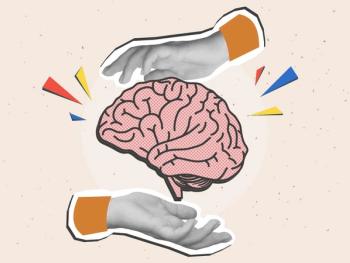
Psychodynamic Psychotherapy by Psychiatrists
While still practiced, psychoanalysis has become an infrequent treatment modality because of its cost, limited insurance reimbursement, and the desire of patients to find quicker and less burdensome treatment methods.
COMMENTARY
The number of psychiatrists performing psychotherapy in the United States has declined dramatically over the past 25 years.1 Most US psychiatrists in clinical practice perform 10-minute “med checks” that are better reimbursed by health insurance companies than
In addition to the wide-spread use of pharmaceuticals, other somatic psychiatric treatments provided by psychiatrists include: electroconvulsive therapy (ECT), transcranial magnetic stimulation (TMS), dialectical behavioral therapy (DBT), eye movement desensitization and reprocessing (EMDR), and psychosurgery for intractable obsessive-compulsive disorder. Ketamine has been approved for treatment-resistant depression and tetrahydrocannabinol and psilocybin are under investigation as psychiatric remedies.
In 1977, George Engel introduced the biopsychosocial model of mental health that combined and integrated somatic interventions (“bio”) with psychotherapy (“psycho”) and an appreciation for the patient’s social (“social”) context.2 The biological interventions at the time were primarily psychotropic medications and ECT. The pendulum has since largely swung from the psychological to the biological as the primary clinical approach in psychiatry although the importance of the patient’s social situation is becoming increasingly acknowledged.3
Why Psychodynamic Psychotherapy?
Psychotherapy remains one of the core competencies required in all US psychiatric residency training programs. The word psychotherapy itself covers a wide spectrum of treatment approaches, eg, cognitive behavioral, psychodynamic, interpersonal, psychoanalytic, and supportive, among many others. In this brief article, I will focus on psychodynamic psychotherapy.
Psychodynamic psychotherapy developed out of psychoanalysis, the brainchild of Sigmund Freud. Psychoanalysis typically consists of 3 to 5 times per week appointments with the patient/client lying on a couch and the trained psychoanalyst sitting behind the couch. The patient free associates (ie, says whatever comes to mind) and the psychoanalyst makes interpretations and other verbal interventions.
Psychoanalytic treatment often lasts several years and is usually indicated for patients with severe character pathology who have not responded to less intensive treatment. Otherwise put, these are most often patients in significant emotional distress, whose interpersonal, professional, academic, and/or emotional lives have deviated from their consciously desired life goals, and who are interested and willing to do the psychological work to change the current course of their lives.
Usually, a crisis in the patient’s life results in them seeking this intensive treatment, often after they have exhausted other unsuccessful efforts to obtain relief from their emotional distress. Not infrequently addictions and a past history of trauma are part of the clinical picture. Psychoanalysis is the gold standard for the treatment of severe personality disorders with selected patients who are well enough to tolerate (and to afford) this arduous and lengthy treatment, and who are sufficiently troubled enough to accept it. Psychoanalytic institutes often offer lower fee psychoanalysis to analysands provided by psychoanalytic candidates-in-training.
While still practiced, psychoanalysis has become an infrequent treatment modality because of its cost, limited insurance reimbursement, and the desire of patients to find quicker and less burdensome treatment methods. Psychodynamic psychotherapy relies on the same theoretical knowledge base as psychoanalysis. However, psychodynamic psychotherapy sessions are less frequent (usually once-a-week) and the depth of therapeutic engagement is less intense.
Both psychoanalysis and psychodynamic psychotherapy rely on the basic premise that our daily lives are governed by unconscious mental processes. Like gravity, the unconscious cannot be seen, but, also like gravity, its effects are powerful and ubiquitous. The unconscious expresses itself through slips of the tongue, mistaken actions, forgetting, and, perhaps most importantly, in psychiatric symptoms themselves.
By listening for the presence of unconscious conflict in the patient’s verbal productions, the psychodynamic psychiatrist helps their patients become aware of and acknowledge both sides of repressed conflictual impulses (sexual, aggressive, narcissistic, sadistic, etc)—both the desire and the defense against the desire—and this alleviates the patient’s consciously experienced depression, anxiety, obsessive thinking, etc.
The verbal exchange between a well-trained psychodynamic psychiatrist and patient looks from the outside simply like an engaged conversation between the 2 parties, with the patient doing most of the talking. The therapist generally does not insert themself into the dialogue unless transference becomes manifest and needs to be addressed.
This is the beauty and the bane of psychotherapy. It is a highly effective, low-tech way for well-trained psychotherapists to help patients who are in significant psychological distress across the diagnostic spectrum. The problem with psychotherapy is that, to the outside observer (as well as to the patient), it appears as if little—if anything—is taking place other than 2 people listening to and speaking with each another.
This is in contrast to somatic psychiatric modalities in which a tangible pill or injectable medication is dispensed, or the patient undergoes treatment with highly technical and complicated equipment, eg, ECT that involves a seizure-inducing device, an EEG machine, and the involvement of an anesthesiologist. Insurance companies have a more difficult time rejecting reimbursement for these more tangible interventions.
With psychodynamic psychotherapy, patients’ lives improve over time and the patient and psychiatrist notice that what was troubling the patient before is no longer there. As Anna Freud put it: “Psychotherapy is like weeding a garden. The weeds come back but there are no longer as many, and they are no longer as tenacious.” This does not negate in any way the reality of genetic, epigenetic, and other biologically-based factors that contribute to patients’ psychopathology and psychiatric symptoms. There is an evidence base for the effectiveness of psychodynamic psychotherapy but that is beyond the scope of this article.
Summary
Psychiatrists who are interested and willing to learn how to practice psychodynamic psychotherapy are in a privileged position to work with the whole patient through their awareness of the psychological, medical, and social contributors to their patients’ psychiatric distress. Psychodynamic psychiatry is an art informed by medical science that offers our patients a powerful treatment that can help restore their emotional, interpersonal, occupational, and social health.
Dr Perman is clinical professor in the Department of Psychiatry and the Behavioral Sciences at the George Washington University Medical Center in Washington, DC, and a clinical professor in the Department of Psychiatry at Creighton University Medical School in Omaha, Nebraska.
References
1. Talk therapy by U.S. psychiatrists declined by half since 1990s. Columbia Psychiatry. December 8, 2021. Accessed August 16, 2024.
2. Biopsychosocial Model. Physiopedia. Accessed August 16, 2024.
3. Alegría M, NeMoyer A, Falgas I, et al.
Newsletter
Receive trusted psychiatric news, expert analysis, and clinical insights — subscribe today to support your practice and your patients.















